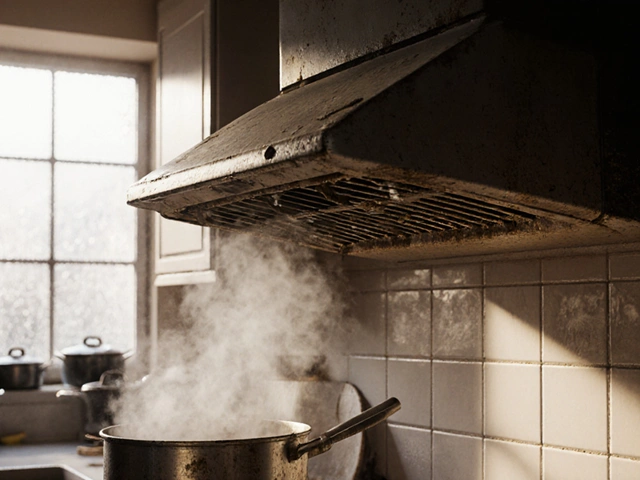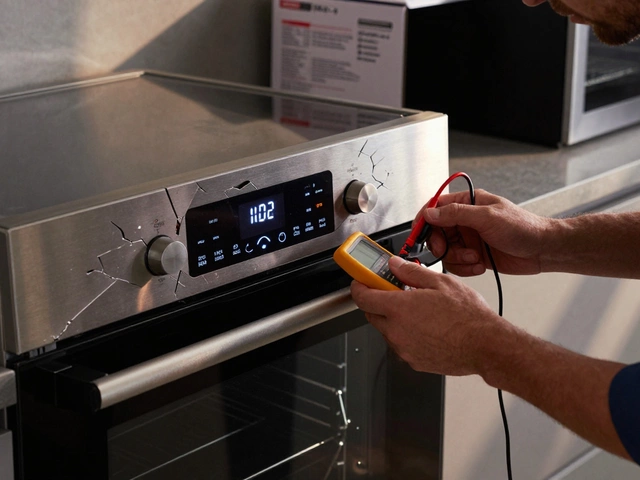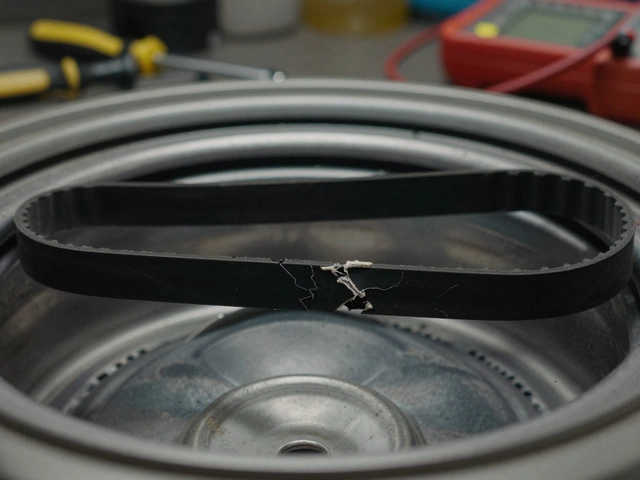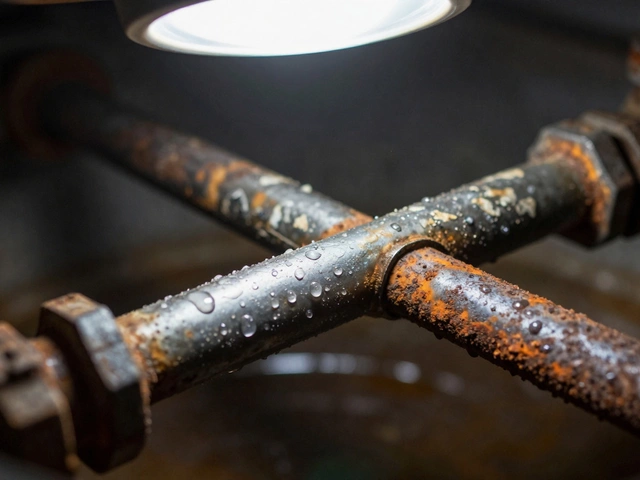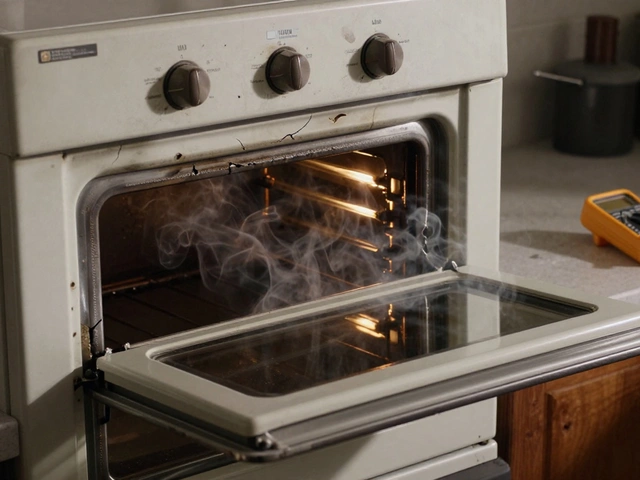Stuck wondering which extractor fan to get? You’re not alone. People often end up grabbing the cheapest or flashiest one they spot, but that’s the fastest way to end up with lukewarm showers and persistent smells. The first step is thinking about where you’ll use the fan. Bathroom, kitchen, or laundry? Not every fan fits every room. For example, kitchen extractor fans need to clear grease and steam fast, while a bathroom one mostly fights off moisture and foggy mirrors.
There’s also a big difference between ceiling, wall, and window-mounted fans. The spot you pick in your room changes your options right away. So before buying, look at the space where the fan will go and check what fits—physically and legally. Most places have building codes laying out minimum airflow or fan types for wet rooms. Ignoring those can mean trouble later if you need repairs or decide to sell your house.
- Understanding Extractor Fan Types and Where They Go
- Size and Power: How Much Extraction You Really Need
- Key Features: Noise, Efficiency, and Extras
- Pitfalls and Pro Tips for Buying
Understanding Extractor Fan Types and Where They Go
Shopping for an extractor fan gets a lot easier once you know the main types, because each is best for a specific job. The most common types are axial, centrifugal, and inline fans. Each one moves air differently, and the type you pick should match where you plan to use it.
- Axial fans are what most people picture—those round ones that usually sit in a wall or window. They work great for short, straight air paths (like a bathroom wall to the outside). They’re not super strong, so they're best for small-to-average sized bathrooms or utility rooms if your ducting is under about 1.5 meters.
- Centrifugal fans handle longer duct runs. They’re chunkier and can push air through bends or longer horizontal ducts without losing power. You’ll see them in internal bathrooms or places further from an outer wall where short ducts aren’t possible.
- Inline fans are basically a turbo option. They sit in the ceiling space or attic, pulling air from the room through ducting and blowing it outside. These get chosen for bigger rooms or when you want a quieter space, since the bulk of the fan noise is up in the ceiling.
Now, think about where the fan is actually going. Is it the bathroom, kitchen, or somewhere like a laundry? Each space has its own needs:
- Bathrooms: Control moisture from showers, prevent black mold, beat those foggy windows. In most home bathrooms, an axial or centrifugal fan gets the job done—just match the power to your room size (more on that later).
- Kitchens: You absolutely need an extractor fan that’s built for grease, steam, and higher air pollution. They’re usually bigger and have grease filters. Window fans or those built into a cooker hood are the standard here.
- Toilets/small rooms: Short ducts and low power usually mean a small axial fan is plenty.
- Laundry: Lots of moisture, so go for something like a centrifugal or inline fan if you can’t vent straight outside.
Don’t forget about where you’ll physically mount the fan. Wall-mounted is easy for direct outside walls. Ceiling fans need a loft or ducting space above. Window fans are handy for single-glazed windows but require a good-sized cutout, which can be tricky to install. If you need to push air a longer distance or want things extra quiet, an inline fan is worth the effort.
| Fan Type | Best For | Common Mounting |
|---|---|---|
| Axial | Short duct runs, outside walls | Wall/Window |
| Centrifugal | Longer ducts, internal rooms | Ceiling/Wall |
| Inline | Big rooms, quiet spaces | Ceiling (in loft/attic) |
A quick heads-up: if your space is prone to moisture but has no direct outside wall, skip the cheap wall models and look straight at centrifugal or inline options to avoid headaches down the line. Getting the right type saves hassle on repairs and makes your fan do the job it’s supposed to. That’s where most regrets come from—wrong type, wrong place.
Size and Power: How Much Extraction You Really Need
This is where most people get tripped up. It's tempting to just buy the first extractor fan you see, but size and power actually make or break the job. The real number to look for is the extraction rate, shown in cubic meters per hour (m³/h) or liters per second (l/s). This tells you how much air the fan can move. If the fan is too weak, you’ll still get misty mirrors and lingering smells, or worse, start growing mold around your bathroom ceiling.
The trick is knowing how much extraction your room needs. Here’s a simple rule: Take your room’s volume (length x width x height in meters) and multiply by 10 (for bathrooms) or 15 (for kitchens). That gives you the minimum m³/h you should look for. Want a shortcut? Check the table:
| Room Type | Typical Room Size (m³) | Recommended Extraction Rate (m³/h) |
|---|---|---|
| Small Bathroom | 15 | 150 |
| Average Kitchen | 25 | 375 |
| En-suite Shower | 8 | 80 |
If you pick a buy extractor fan that’s too weak, it’ll run longer, use more energy, and burn out faster. On the flip side, a huge fan in a tiny room just wastes power and can even suck cold drafts in from outside.
Kitchens always need beefier fans than bathrooms because they cope with heavier steam, smoke, and grease. In the UK, for example, building regs say kitchens need at least 60 l/s (which is 216 m³/h) if mounted over a hob. Most bathroom fans built for repair or replacement sit around 80–110 m³/h, which works for anything up to an average family bathroom.
Before you make a decision, double-check the available power supply. Swapping a standard bathroom fan for a chunky kitchen fan might trip your electrics if you’re not careful. If you’re replacing a failed unit, see if your wiring can handle more juice. A quick peek at your old fan’s sticker will tell you the wattage. Match it or go higher if you want more grunt, but don’t throw in a monster fan without sorting the wiring.

Key Features: Noise, Efficiency, and Extras
No one likes an extractor fan that sounds like a jet engine. When picking a extractor fan, look at the noise level, usually listed in decibels (dB). Anything over 35-40 dB can feel loud, especially in a quiet bathroom. Some good bathroom fans run at just 20 dB, which is quieter than a whisper. For kitchens, a bit more sound is expected, but you still want to stay under 50 dB if you don’t want your cooking drowned out by fan noise.
Energy efficiency matters, especially these days with power prices only going up. Grab a fan with a low-watt motor and look for the energy label if you’re shopping in places like the UK or EU. Many decent models use just 8 to 18 watts to do the job, and some even have smart sensors so they only run when needed.
- Extractor fan airflow is measured in cubic meters per hour (m³/h) or liters per second (l/s)—the bigger the bathroom or kitchen, the higher the number you want. For example, most regular bathrooms need a fan with at least 54 m³/h (15 l/s) airflow. If it’s a kitchen, you want to go higher, often 150-200 m³/h, because steam and smells add up fast.
- Speed settings and timers are game changers. Fans with timers keep running for a set time after you leave the room—great if you don’t want dampness lingering. Humidity sensors take it a step further and kick on automatically when the air gets steamy.
- Backdraft shutters keep cold air and bugs out when the fan isn’t running. Check if your fan includes these, or buy them as an add-on.
Here’s a look at some typical extractor fan features found on the market now:
| Feature | Typical Range/Value |
|---|---|
| Noise Level (dB) | 20-50 dB |
| Airflow (m³/h) | 54-200+ |
| Power Usage | 8-30 Watts |
| Humidity Sensor | Optional |
| Timer | 1-30 minutes post-use |
Don’t forget the extras like LED lights, smart controls, or anti-mold coatings if you want something fancy. But honestly, always put airflow, noise, and energy use at the top of your list—those save you headaches (and for extractor fan repair, a quieter, low-stress fan usually means fewer breakages down the line).
Pitfalls and Pro Tips for Buying
Picking out the right extractor fan sounds easy, but there are a bunch of ways people trip up. Let’s talk common mistakes first. One big error? Ignoring the actual airflow needs of your space. Fans are rated in litres per second (L/s) or cubic metres per hour (m³/h). If you install a fan that's too weak, you’ll keep fighting steam and smells. An undersized fan has to work harder, leading to quicker burnouts and more calls for extractor fan repair.
Here’s a simple power tip: grab a calculator and figure out your room’s volume (length × width × height). For bathrooms, aim for at least 6-10 air changes per hour. Kitchens usually need more like 12-15 air changes, especially if you cook a lot. There are online calculators, but even just comparing product labels gets you halfway there.
- Don’t forget about noise. A loud fan gets annoying fast. Look for ones rated below 30dB for bathrooms and under 40dB for kitchens.
- Make sure the fan fits your room layout and can actually vent outside. Fumes and moisture have to go somewhere—venting into a loft or attic is not just a bad idea, it’s against code in a lot of places.
- Skimping on quality usually backfires. Cheap fans eat more electricity, wear out quicker, and are noisy. Brands with a solid warranty are worth a few extra bucks.
More pro tips? Look for energy-efficient models with the right kind of sensor. Humidity sensors in bathrooms are a lifesaver, kicking in when showers fog up the room. Built-in timers mean you don’t have to remember to switch the fan off. And always check if the fan needs regular cleaning—kitchen fans especially get gross with grease if you ignore them too long.
Some numbers for perspective—here’s what you get with common fan types:
| Fan Type | Typical Airflow (m³/h) | Noise Level (dB) |
|---|---|---|
| Standard Bathroom | 80-95 | 25-35 |
| Kitchen Wall/Window | 200-350 | 35-45 |
Summing up, don’t just grab the closest or cheapest extractor fan. Think about what your space actually needs, check the specs, and look for features that’ll save hassle down the road. That’s the recipe for strong airflow and less time messing with repairs!




